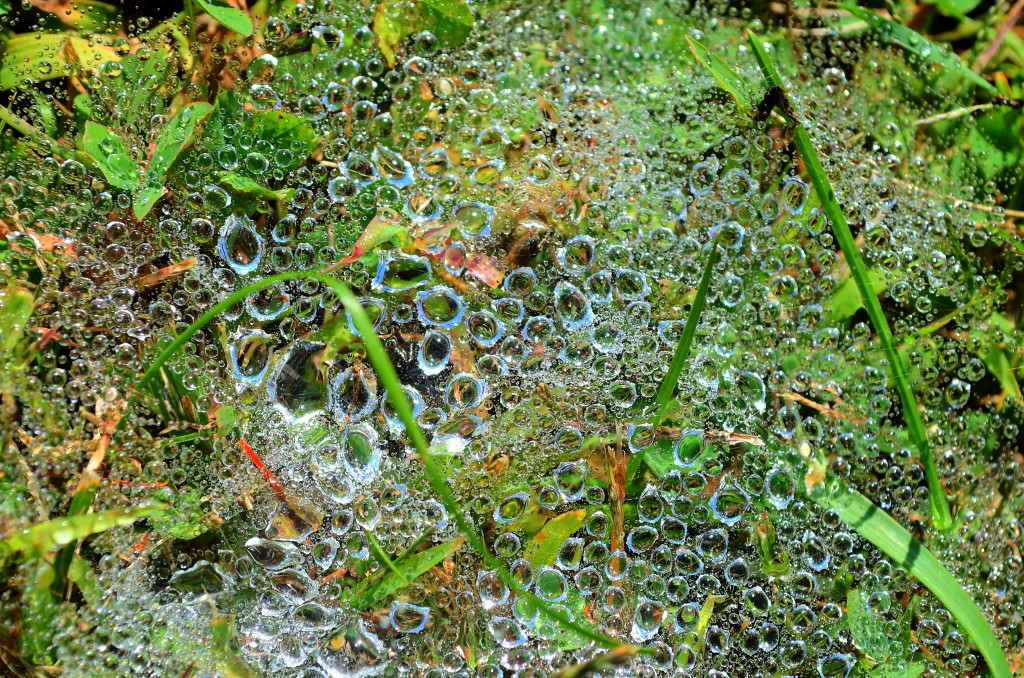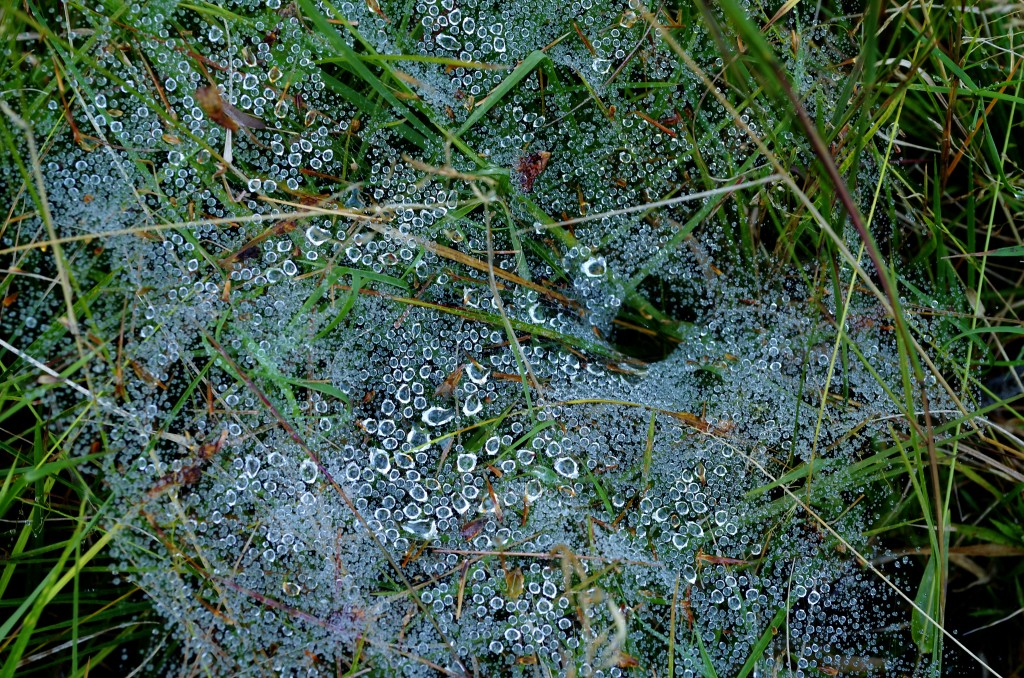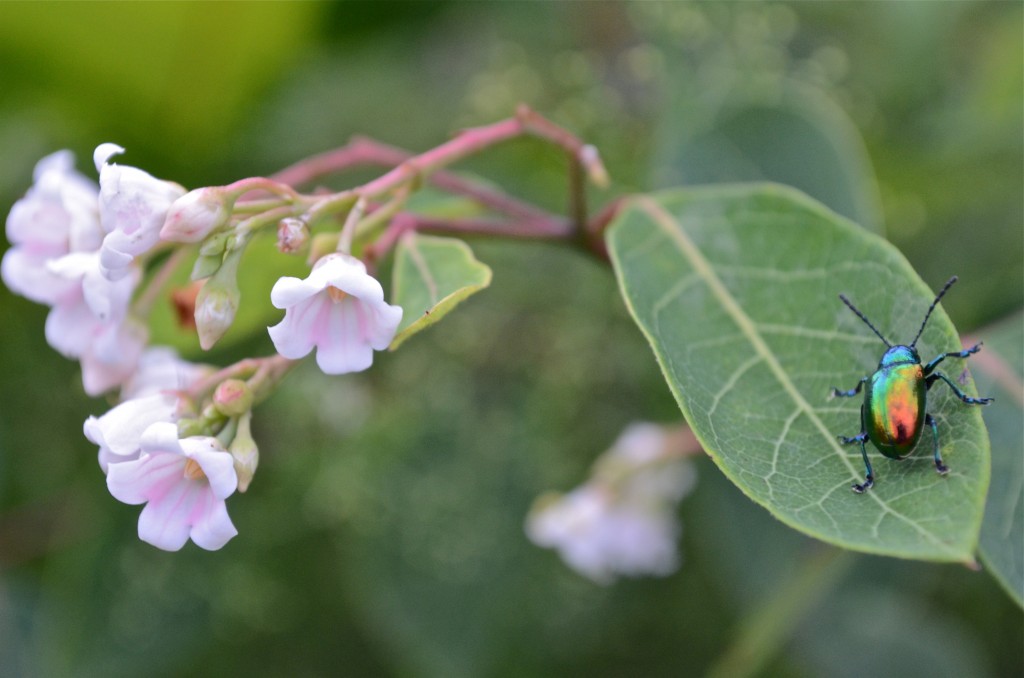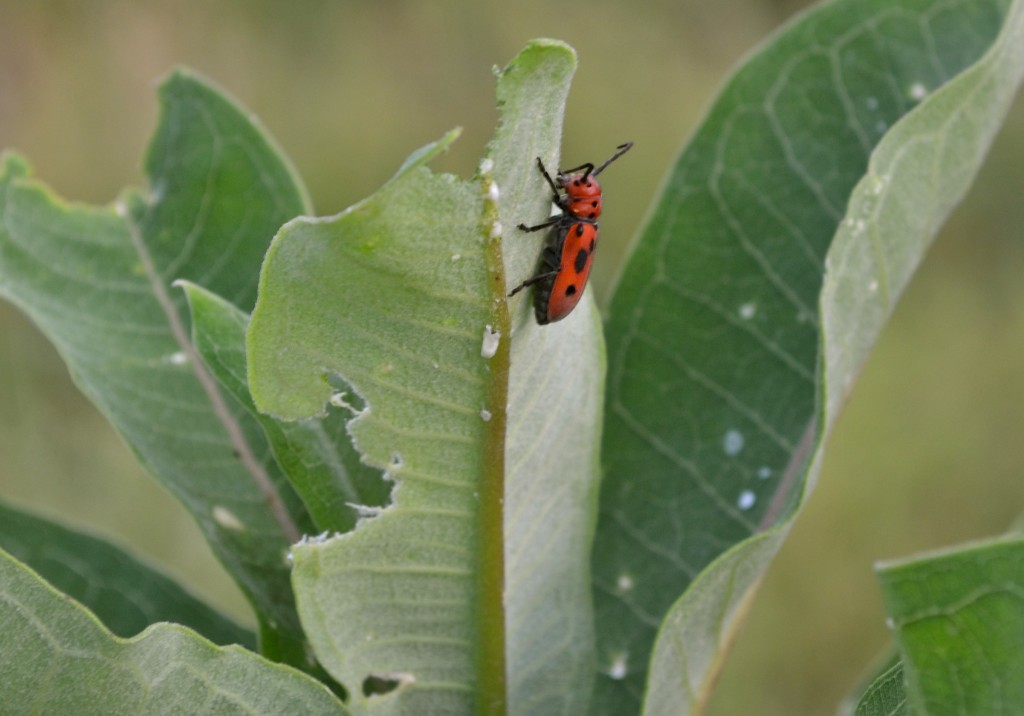
 It looked like someone had too many diamond-studded hairnets, so they had just tossed them all over the grass. Here’s one in sun and one in shade. In the sun one, you can see the sky reflected in the dew. In the shade one, you can see the dark funnel-shaped hole that the spider hides in. Evidently these webs are not sticky, so if anyone (very small) happens on to it, the spider is just very speedy zipping out to grab it. Their bite paralyzes their prey, but their chompers are too small to pierce human skin. Genus Agelenopsis.
It looked like someone had too many diamond-studded hairnets, so they had just tossed them all over the grass. Here’s one in sun and one in shade. In the sun one, you can see the sky reflected in the dew. In the shade one, you can see the dark funnel-shaped hole that the spider hides in. Evidently these webs are not sticky, so if anyone (very small) happens on to it, the spider is just very speedy zipping out to grab it. Their bite paralyzes their prey, but their chompers are too small to pierce human skin. Genus Agelenopsis.
Grass Spider



